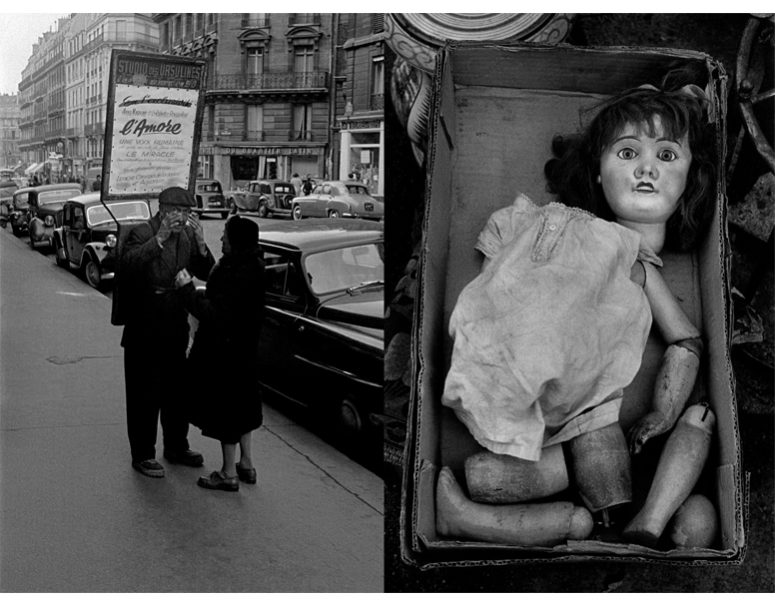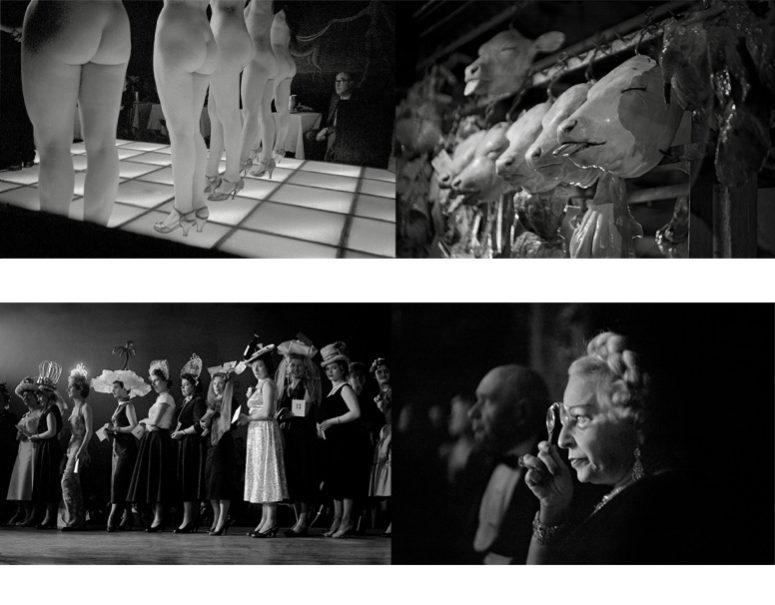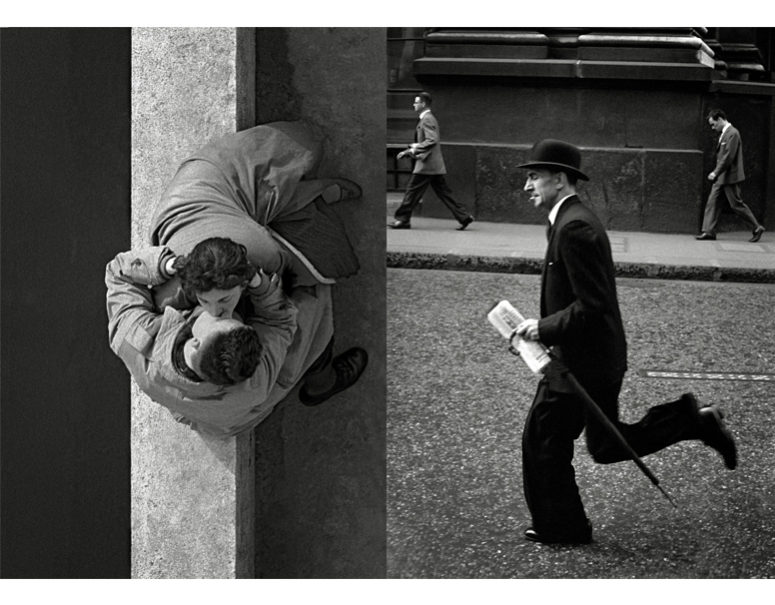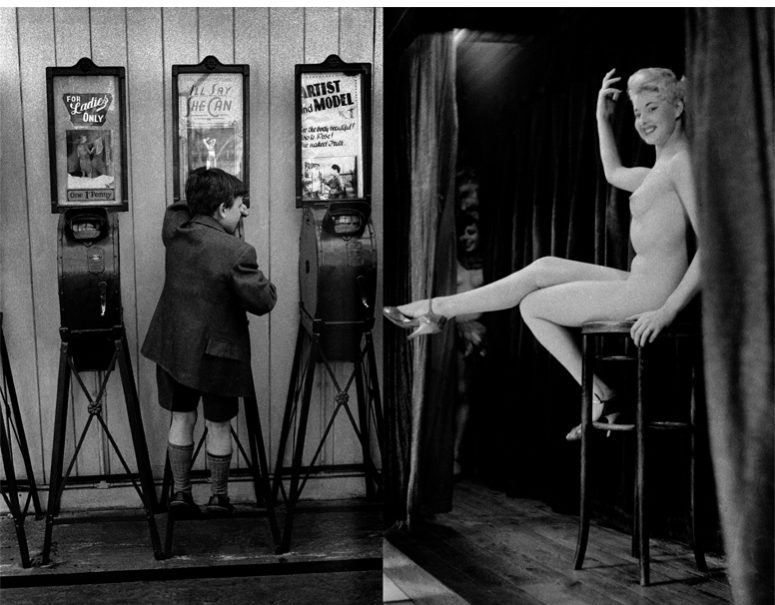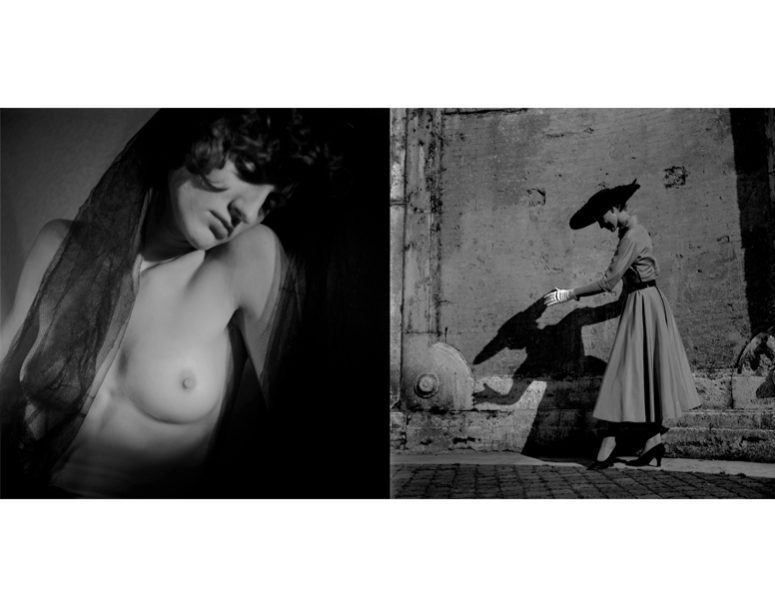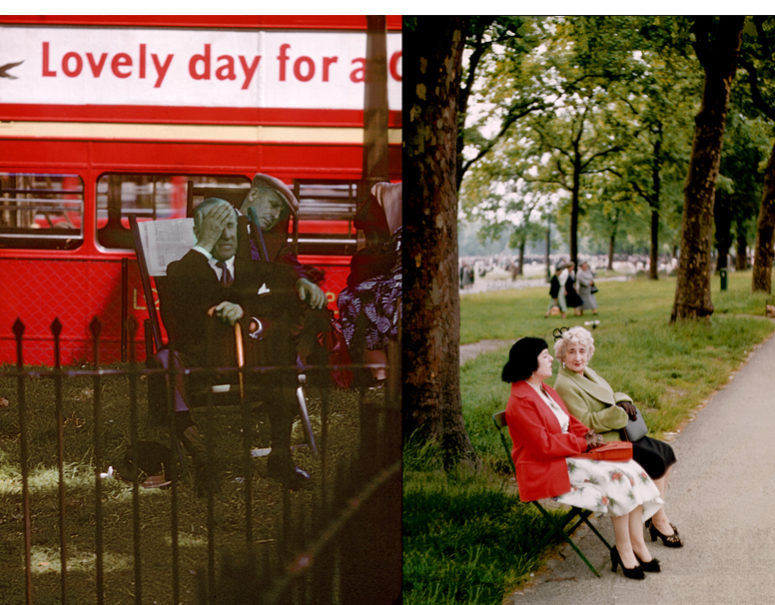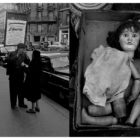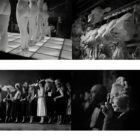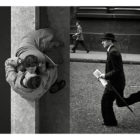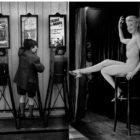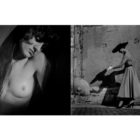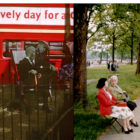Frank Horvar – Horvatyear
2018 will be the year of my 90th birthday. To celebrate this I’m producing a series of 365 dyptics : as many as the days of that year. Some will be presented in museums and art galleries, and one will appear each day of the year on my Facebook page.
Dyptics are juxtapositions of two of my photos, related by some analogy in composition, colour or mood – but not necessarily by subject matter, time or place. Like everyone working with images, I have assembled dyptics all my life, if only when sticking two snapshots in an album or two posters on a wall. But only recently I realised that some dyptics can mean something else (and more) than other images placed side by side.
A single photo shows a fraction of space and time, disconnected from its surroundings by the framing, and from its before and after by the opening of the shutter. To the viewer, this may change its meaning : a garden may become a forest, a laugh an agony, a street scene in Paris a slum in Calcutta.
Henri Cartier-Bresson used to say that to make a good photo, you must place your eye, your mind and your heart on the same line of sight. I would add that a good photo is a miraculous coincidence between my urge to express an idea (or an emotion) and some unexpected reality presenting itself to my lens. By either definition, great photos are rare. Few photographers would claim to have achieved more than a few hundred in their life. A great photo cannot be retaken, just as miracles don’t happen twice.
When Henri photographed that man leaping over a puddle, he didn’t first ask him to rehearse his leap : he somehow anticipated it, and within a fraction of a second grasped its significance and fitted it into a composition. For what went on in his brain at that instant, the word miracle doesn’t seem out of place.
But dyptics are a different matter. In have digitalized a few thousand of my photos, including some I took at fourteen, with my first camera : all the ones I didn’t willingly destroy or loose by some negligence, and that at some point I found worth preserving. To assemble dyptics I picked a few hundred, of which I imagined that someone would like to see them on his walls. This excluded painful or shocking situations – and inevitably ruled out some of my favorites. The crucial step was combining them. By belonging to a pair, a photo can become stronger – or weaker : very much like a person. Each tells its story, about the fragment of reality it represents. But in some cases, the paring may reveal aspects less apparent at first sight, just as some objects seem to change when seen from different angles. While other photos have so much to tell that they say it better when left by themselves – which ruled out some other favorites.
In short, assembling dyptics taught me a lesson, not only about my photography, but also about the mechanism of my mental associations between images, memories and emotions. Not unlike footprints, that at this point of life I wish to leave behind me.
Frank Horvat, May 2017
